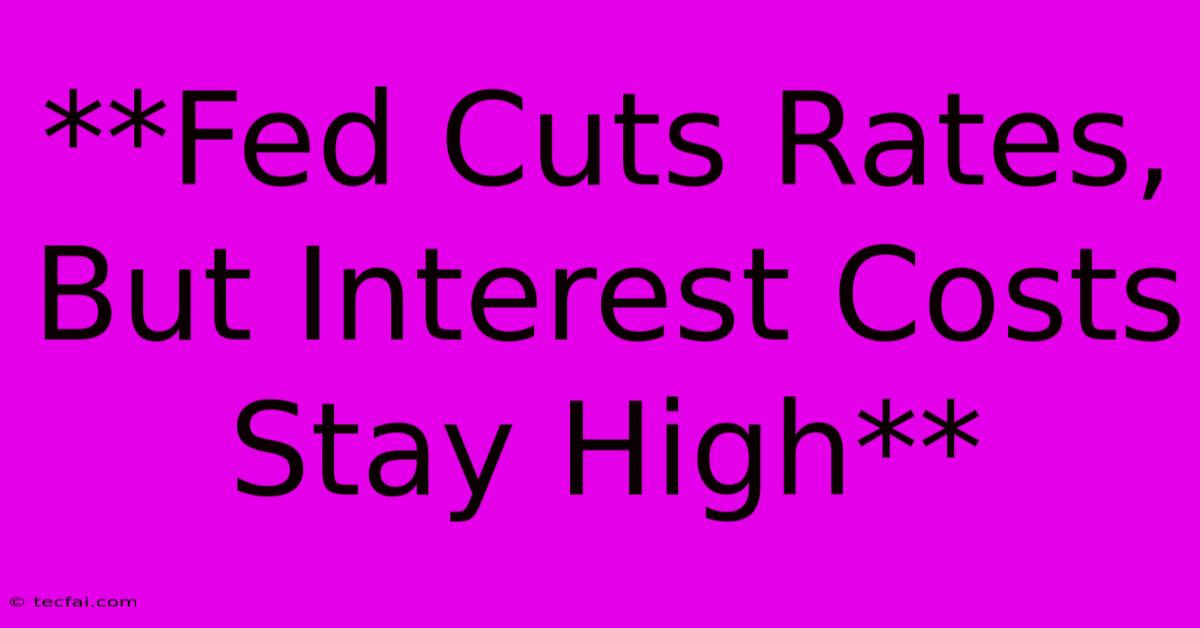**Fed Cuts Rates, But Interest Costs Stay High**

Discover more detailed and exciting information on our website. Click the link below to start your adventure: Visit Best Website tecfai.com. Don't miss out!
Table of Contents
Fed Cuts Rates, But Interest Costs Stay High: What Does It Mean for You?
The Federal Reserve has cut interest rates, a move that was widely anticipated by economists and investors alike. However, despite the rate cut, many Americans are still facing high interest costs on loans and credit cards. This begs the question: why are interest rates still so high even after the Fed's action?
Understanding the Fed's Role
The Federal Reserve, often referred to as the Fed, is the central bank of the United States. One of its primary responsibilities is to manage interest rates to control inflation and stimulate economic growth. When the Fed cuts interest rates, it becomes cheaper for banks to borrow money, which can lead to lower interest rates on loans for consumers and businesses.
The Fed's Recent Move
The Fed's recent rate cut was intended to address concerns about a potential economic slowdown. The central bank is aiming to encourage borrowing and spending, boosting economic activity. However, the rate cut alone may not be enough to bring down interest costs for everyone immediately.
Why Interest Costs Remain High
Several factors contribute to the persistent high interest costs, even after the Fed's rate cut:
- Inflation: High inflation has eroded purchasing power and forced lenders to increase interest rates to protect themselves from the decline in the value of their money.
- Bank Profitability: Banks are still seeking to maintain profitability and may not be passing on the full benefit of the rate cut to borrowers.
- Credit Risk: Lenders often assess borrowers' creditworthiness before setting interest rates. Individuals with poor credit scores will likely continue to face higher interest rates, regardless of the Fed's actions.
What Does This Mean for You?
While the Fed's rate cut is a positive step, it's crucial to understand that it may not immediately translate into lower interest rates on your loans or credit cards. Here's what you can do:
- Shop Around: Compare interest rates from different lenders before taking out a new loan or credit card.
- Improve Your Credit Score: A higher credit score will often qualify you for lower interest rates.
- Negotiate: Don't be afraid to negotiate with your lender to see if they're willing to lower your interest rate.
- Consider Refinancing: If you have an existing loan with a high interest rate, consider refinancing to secure a lower rate.
The Fed's rate cut is a step in the right direction, but it's important to remember that the path to lower interest costs might be gradual. By understanding the factors influencing interest rates and taking proactive steps, you can navigate this environment and make informed financial decisions.

Thank you for visiting our website wich cover about **Fed Cuts Rates, But Interest Costs Stay High** . We hope the information provided has been useful to you. Feel free to contact us if you have any questions or need further assistance. See you next time and dont miss to bookmark.
Featured Posts
-
Dali Mpofu Sluit By Mk Party Aan
Nov 08, 2024
-
Kimmel Tears Up Discussing Trump Win
Nov 08, 2024
-
Trump Names Campaign Manager Chief Of Staff
Nov 08, 2024
-
Mourinho On Istanbul Premier League Return Uefa
Nov 08, 2024
-
Big Budget Day Of The Jackal Remake The Truth
Nov 08, 2024
